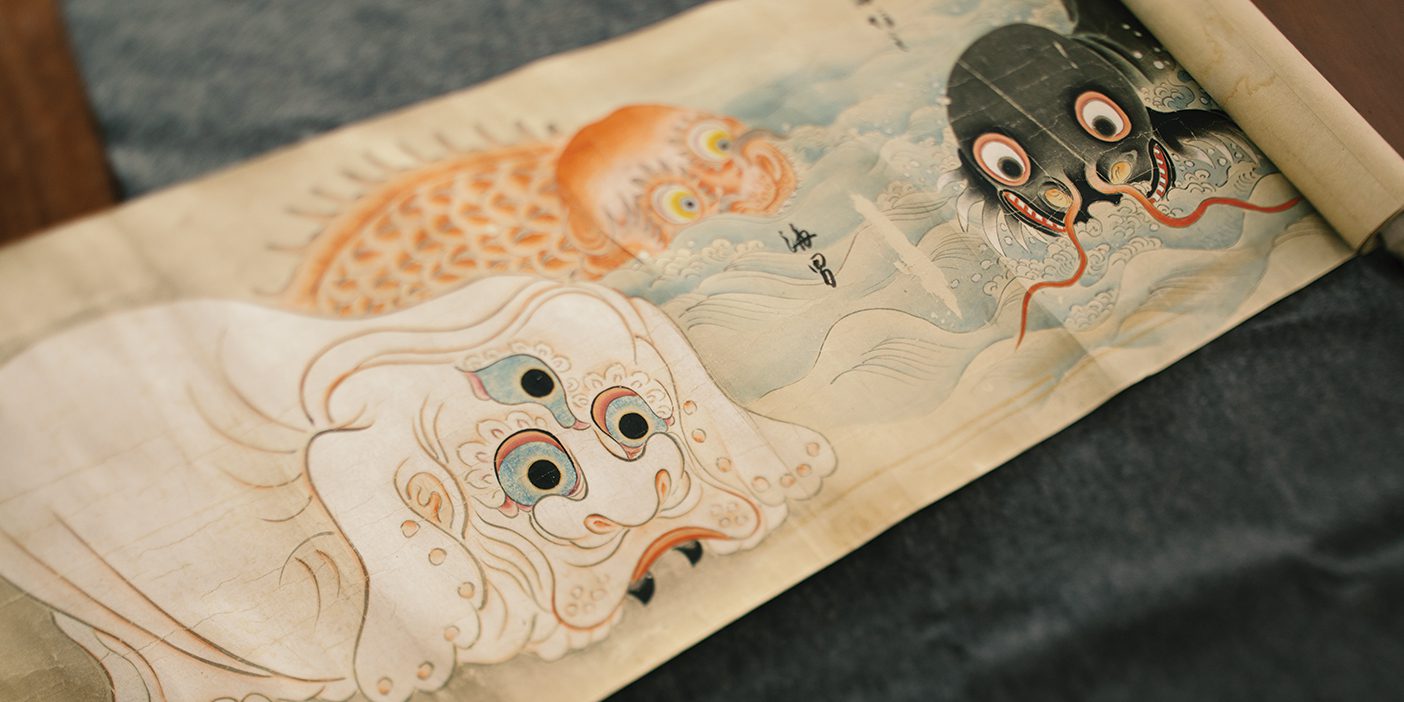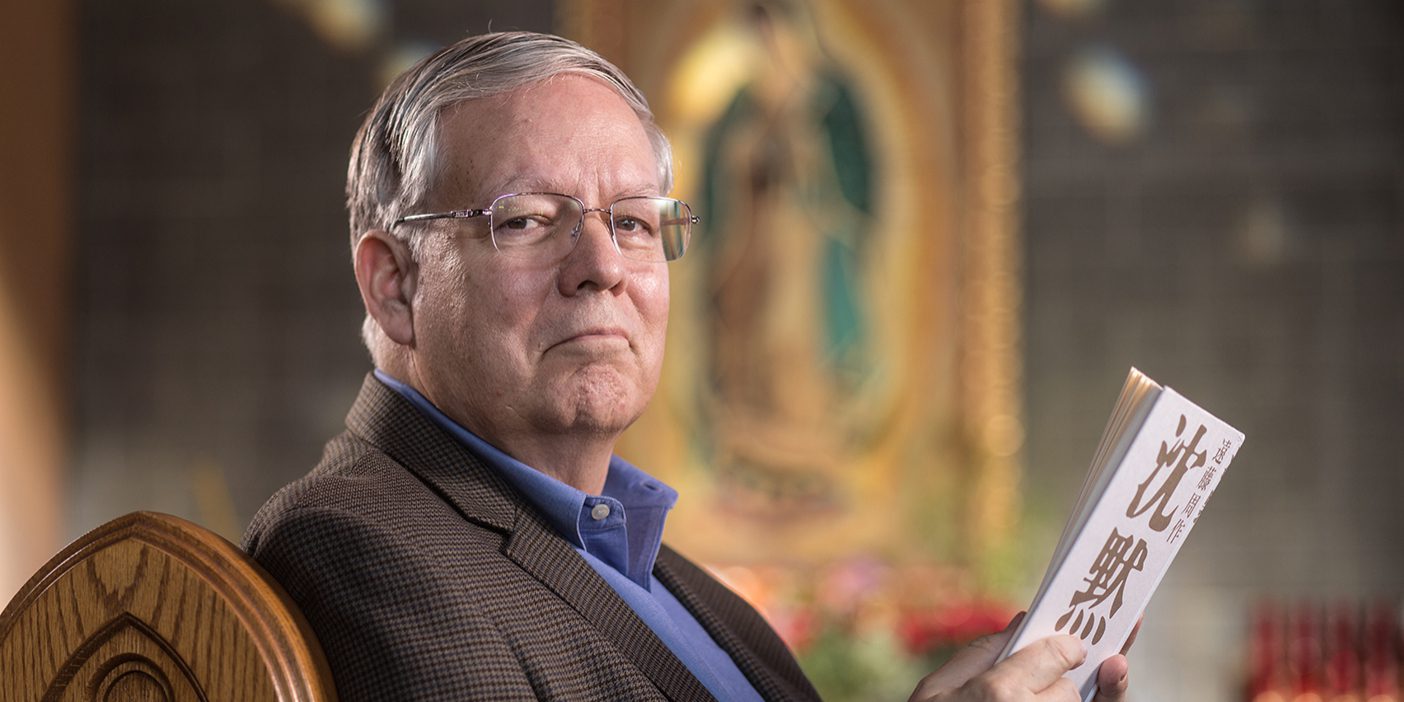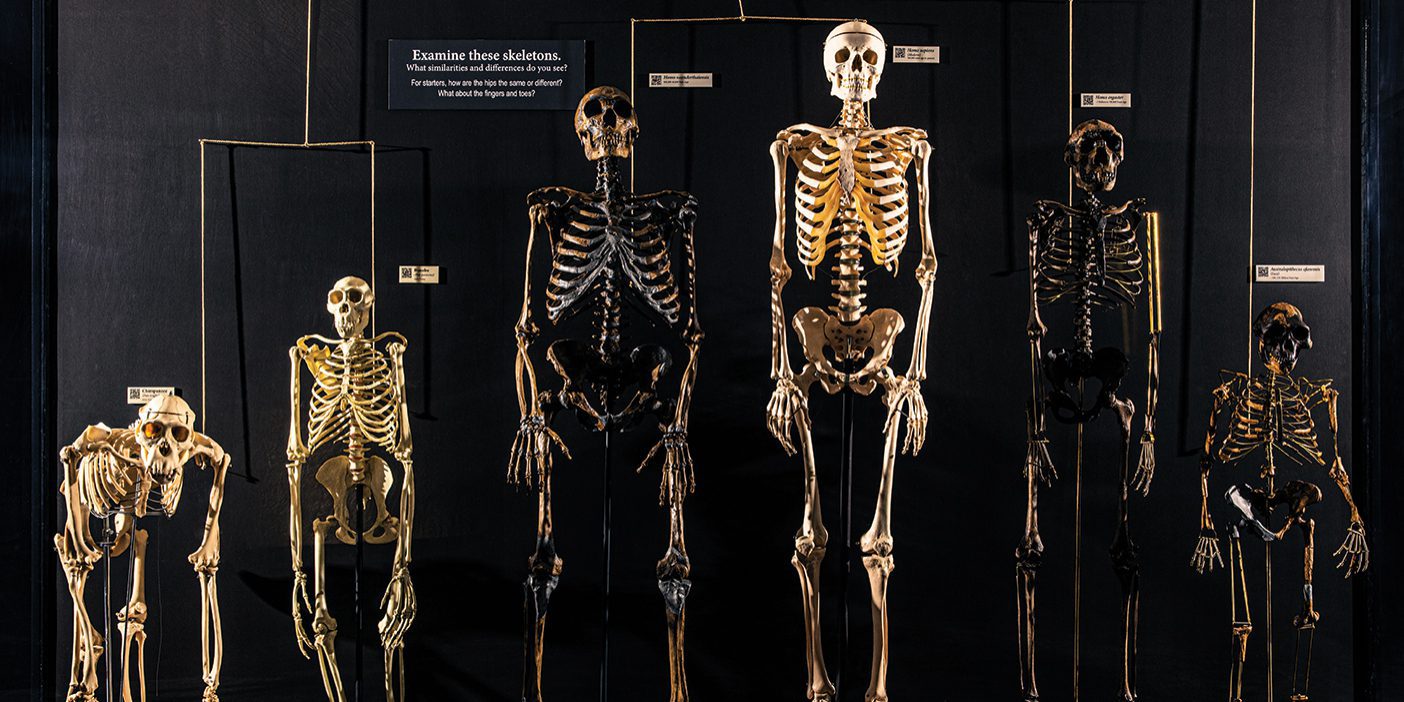
In the dark of night during World War II, a young Japanese soldier on Papua New Guinea came across an invisible wall. He could feel it but he couldn’t get around it, so he slept the night at its base. When he woke up, the wall was gone. And where it had been—a cliff edge. Mizuki Shigeru, the soldier, had run into a creature straight out of Japanese folklore: the nurikabe.
“If the nurikabe hadn’t been there,” he wrote in his memoir, Showa, “I would have run straight off into the darkness and died.”
The invisible nurikabe, a type of yōkai or supernatural monster popular in Japanese folklore, is never seen in the tales of its encounters. Mizuki, who went on to be a famous manga artist, depicted nurikabe as an anthropomorphic wall—an imagining that quickly became a beloved character across Japan. But thanks to a scroll at BYU, the world is getting a look at a centuries-old nurikabe for the first time.
“The work . . . was seen almost immediately by more people than there are on campus right now.” —Jack Stoneman
Bakemono no e, a Japanese scroll from the late 1600s housed in BYU’s Special Collections, contains illustrations of 35 labeled yōkai (see them all here), many of them common in Japanese pop culture today—people sometimes say they run into them as a way to explain strange phenomena. But BYU’s scroll contained something unique: a three-eyed dog-like creature labeled “nurikabe.” Only one other such image is known to exist, but it isn’t labeled—no one knew what the creature was. BYU’s scroll provided the answer—and the oldest known image of the nurikabe in existence.
When a visiting scholar shared the image from BYU’s scroll with colleagues in Japan, it made the newspapers. Japan went nuts for it. BYU’s three-eyed nurikabe has appeared in trading-card games, on tote bags, and even as an antagonist in an episode of Power Rangers Ninja Steel.
“The nurikabe has always ranked as one of the top five favorite yōkai characters,” says Jack C. Stoneman (BA ’98), professor of Asian and Near Eastern languages. “So when this old image was discovered, people loved that.” Stoneman enlisted his Japanese Culture class in annotating Bakemono no e. Each student picked one of the 35 yōkai illustrated in the BYU scroll, researched it, and put their annotations on Wikipedia and The Ten Thousand Rooms Project, an online archive. Their research, live since December, has been viewed more than 222,000 times.
“The Japanese supernatural is just such a huge phenomenon right now,” says Stoneman. “The work that my students did on this project was seen almost immediately by more people around the world than are on campus right now.”












